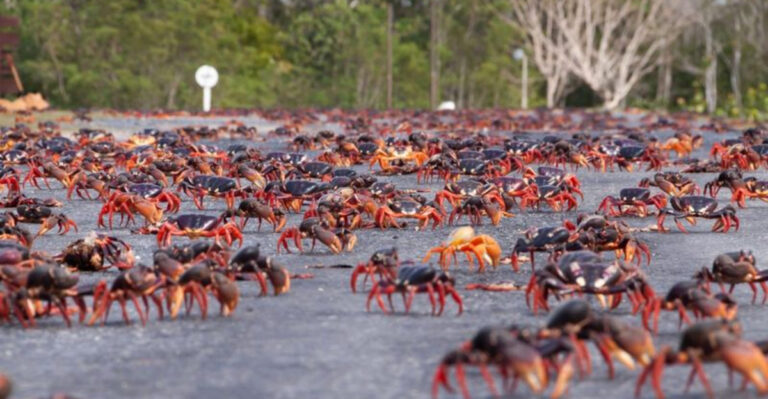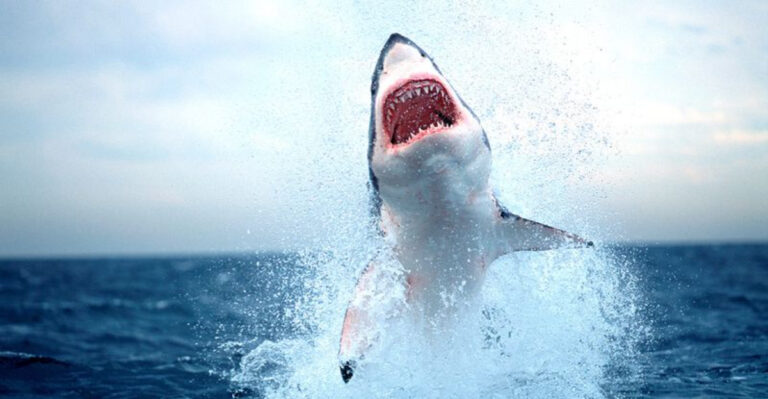The 14 Largest Fish Ranked By Weight Found In U.S. Waters
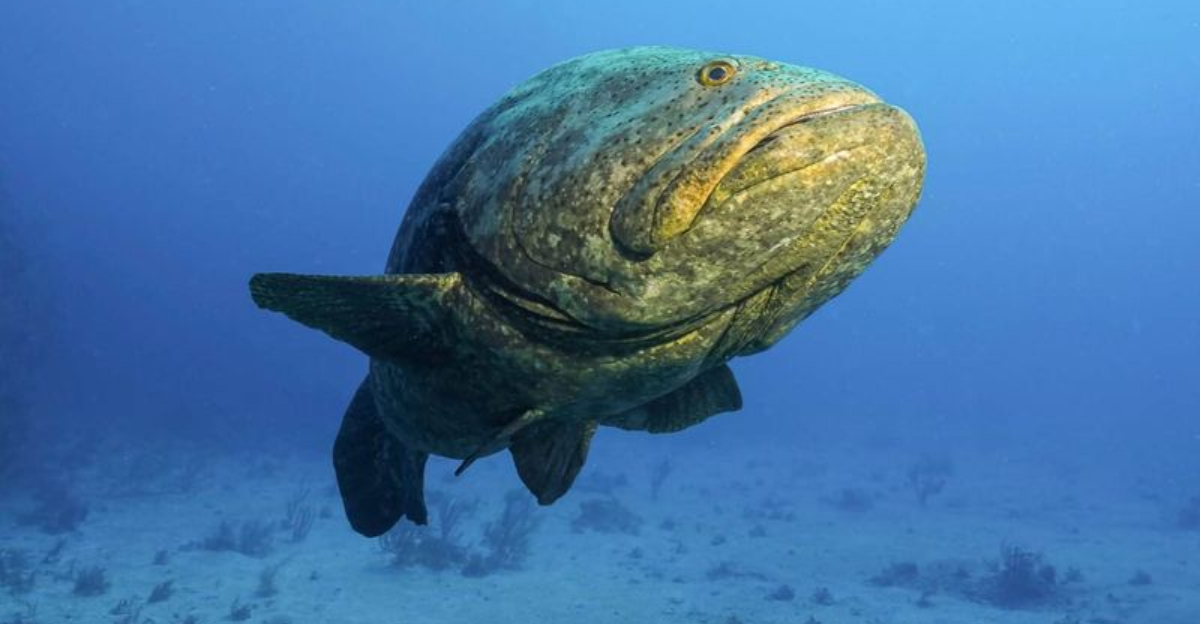
America’s waters hide some truly enormous fish that would make any angler’s heart race. From massive freshwater catfish lurking in muddy river bottoms to ocean-dwelling giants that patrol coastal waters, these aquatic titans represent nature at its most impressive.
Whether you’re an avid fisherman or simply fascinated by underwater creatures, these heavyweight champions showcase the incredible diversity and scale of fish found throughout U.S. territories.
1. Flathead Catfish: The River Monster
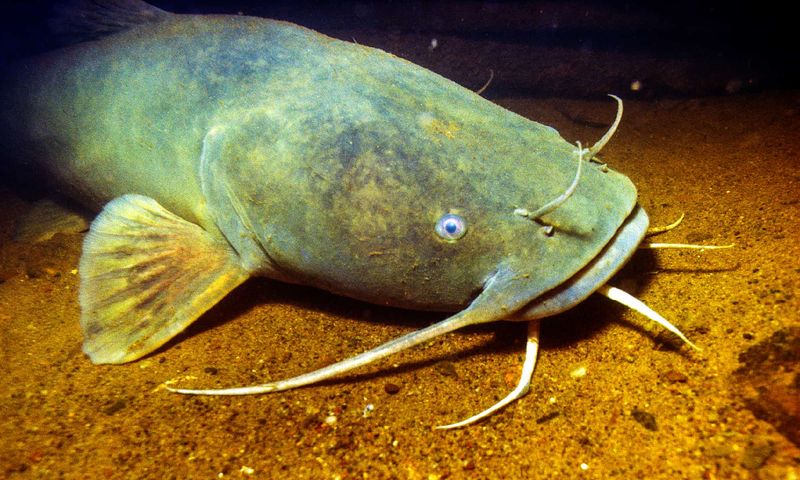
Ken Paulie made fishing history when he hauled in this 123-pound behemoth from Kansas waters in 1998. The fish was longer than most children are tall!
Flathead catfish are ambush predators with mouths wide enough to swallow prey nearly half their size. Unlike their scavenging cousins, these giants prefer live food, actively hunting smaller fish under the cover of darkness.
2. Blue Catfish: The Southern Giant
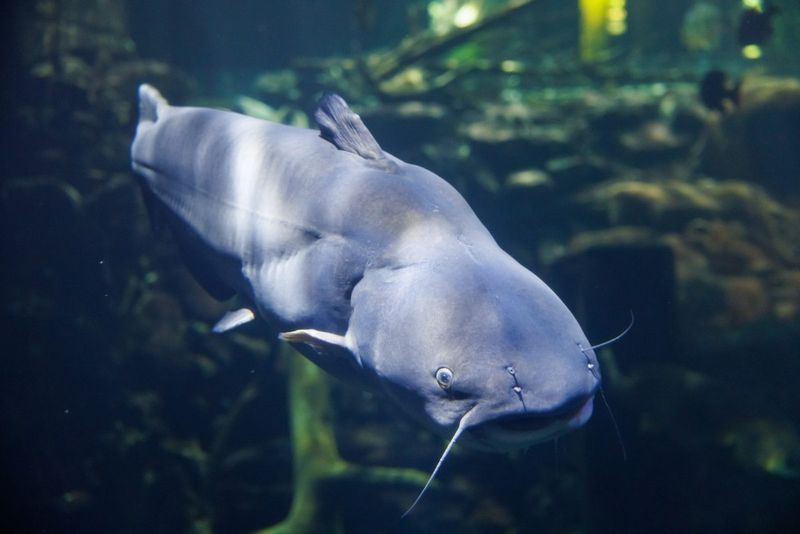
Richard Nicholas Anderson couldn’t believe his eyes when he reeled in this 143-pound colossus from Virginia’s waters in 2011. The catch required multiple people just to lift it for photos!
Blue catfish have exploded in population throughout southern waterways. Originally introduced for sport fishing, they’ve become invasive predators in many ecosystems, growing to enormous sizes by feasting on native species.
3. American Paddlefish: The Living Fossil
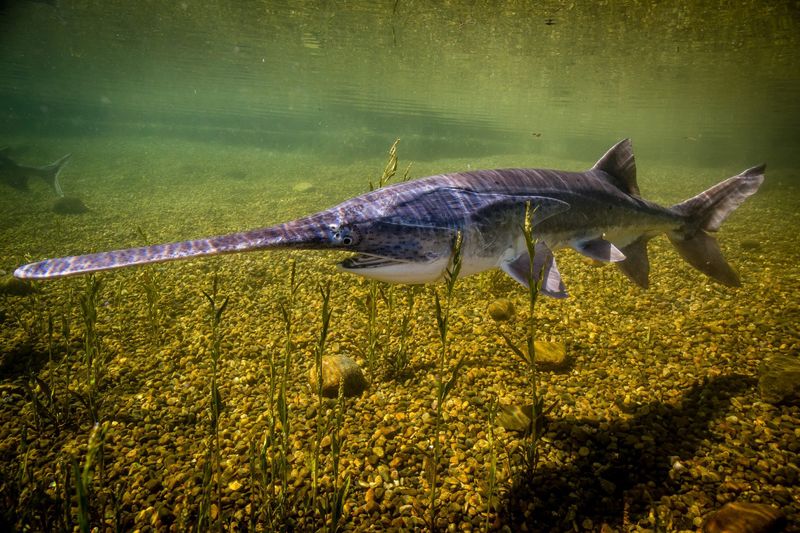
When young Grant Rader landed this 164-pound prehistoric-looking creature in Oklahoma during 2021, he secured a world record. His father initially thought he’d snagged the bottom of the lake!
Paddlefish swim with their enormous mouths open, filtering tiny food particles through specialized gill rakers. Their distinctive paddle-shaped snouts contain electroreceptors that help detect zooplankton swarms in murky waters.
4. Lake Sturgeon: The Freshwater Dinosaur
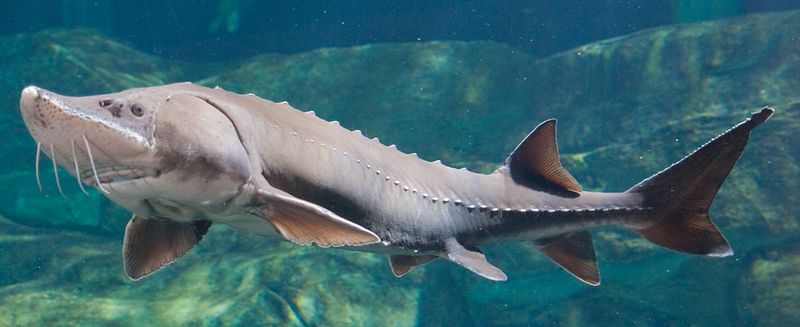
Joe Maka Jr. battled this 193-pound living fossil in Michigan waters back in 1974. Imagine fighting something that’s potentially older than your grandparents!
Lake sturgeon can live over a century, with females not reaching sexual maturity until 20-25 years old. Their bodies remain virtually unchanged for millions of years, sporting bony plates instead of scales and vacuum-like mouths perfect for sucking up small creatures from lake bottoms.
5. Alligator Gar: The Armored River Dragon
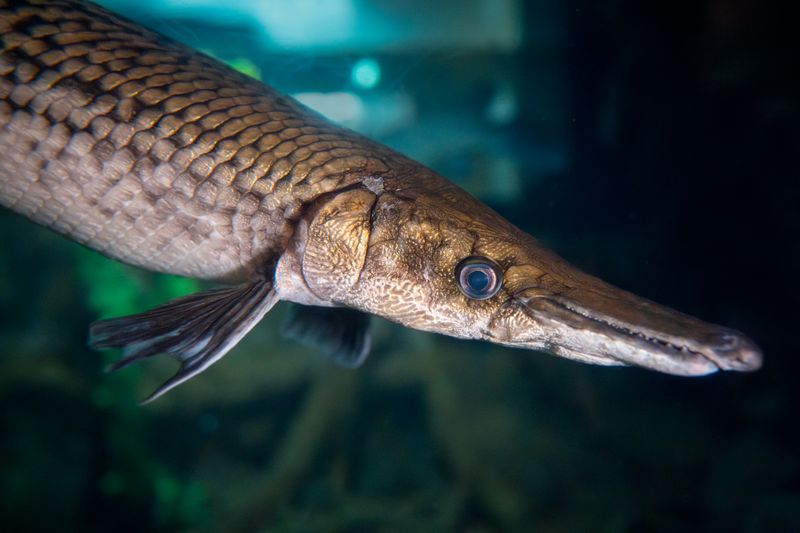
Art Weston made headlines in 2023 when he landed this 283-pound prehistoric monster in Texas waters. The fish’s double row of teeth made handling it extremely dangerous!
Alligator gar possess the unusual ability to breathe air, allowing them to survive in oxygen-depleted waters. Their diamond-shaped scales are so tough that Native Americans once used them as arrowheads and early settlers fashioned them into crude planting tools.
6. Goliath Grouper: The Reef King
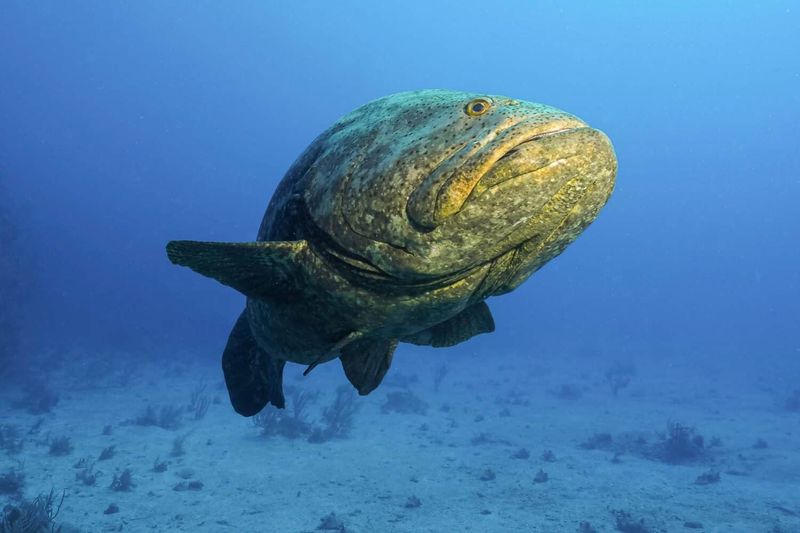
Lynn Joyner’s 680-pound behemoth, caught off Florida in 1961, stands as testament to why this species earned protection status. The fish was nearly as large as a compact car!
Goliath groupers produce distinctive booming sounds by contracting their swim bladders during spawning gatherings. Once hunted to near extinction, these gentle giants now enjoy protected status, allowing divers to witness their impressive size up close at Florida reefs.
7. Bull Shark: The Freshwater Wanderer
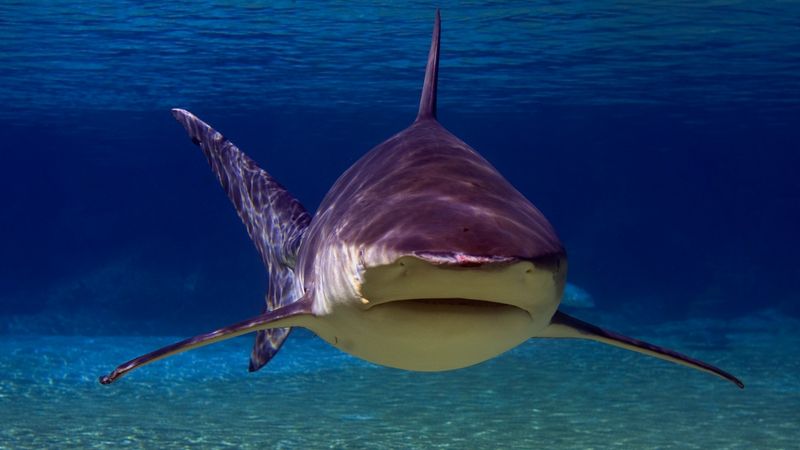
Ronald de Jager conquered this 697-pound predator off Florida’s coast in 2001. What makes bull sharks particularly fascinating is their unique ability to thrive in both salt and freshwater.
Unlike other sharks, bulls can regulate their bodies to swim hundreds of miles upriver. They’ve been spotted in the Mississippi as far north as Illinois! Their aggressive reputation and adaptability make them one of the most dangerous shark species to humans.
8. Dusky Shark: The Coastal Hunter
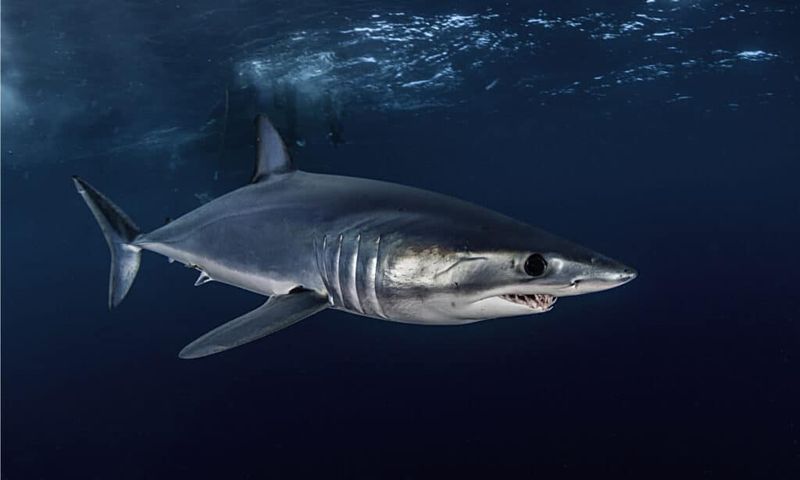
Warren Girle’s 764-pound catch off Florida in 1982 showcases why these sharks dominate coastal ecosystems. The fish was longer than a king-sized bed!
Dusky sharks grow extremely slowly, taking up to 20 years to reach maturity. Their deliberate reproduction rate makes them particularly vulnerable to overfishing. Despite their impressive size, they’re relatively shy around humans, preferring to hunt fish, smaller sharks, and squid along continental shelves.
9. Thresher Shark: The Tail-Whipping Predator
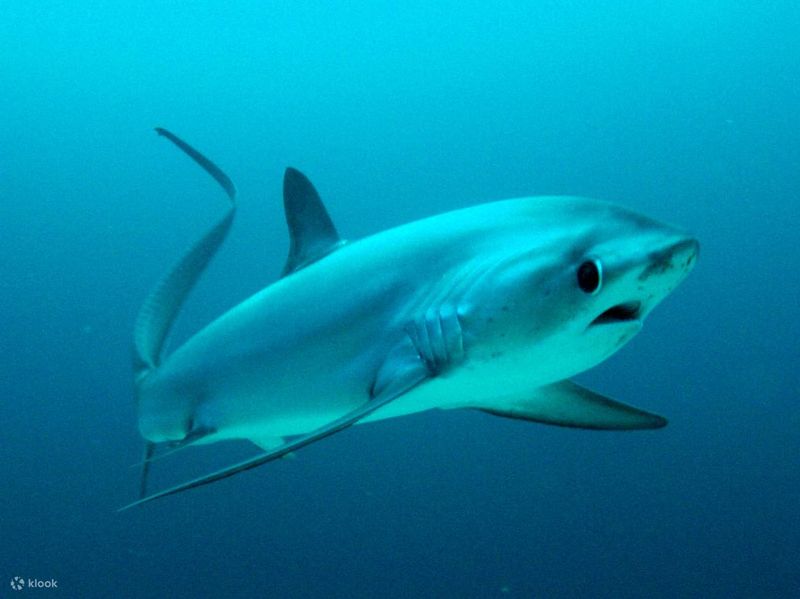
David Hannah landed this 767-pound oceanic oddity off Florida in 1983. The shark’s tail alone measured nearly half its total body length!
Thresher sharks employ a truly unique hunting strategy. They circle schools of fish, then stun them with powerful whip-like strikes from their elongated upper tail fin. Some can even breach entirely out of water, creating spectacular displays as they crash back into the ocean after aerial hunting maneuvers.
10. Black Marlin: The Sprinting Spearman
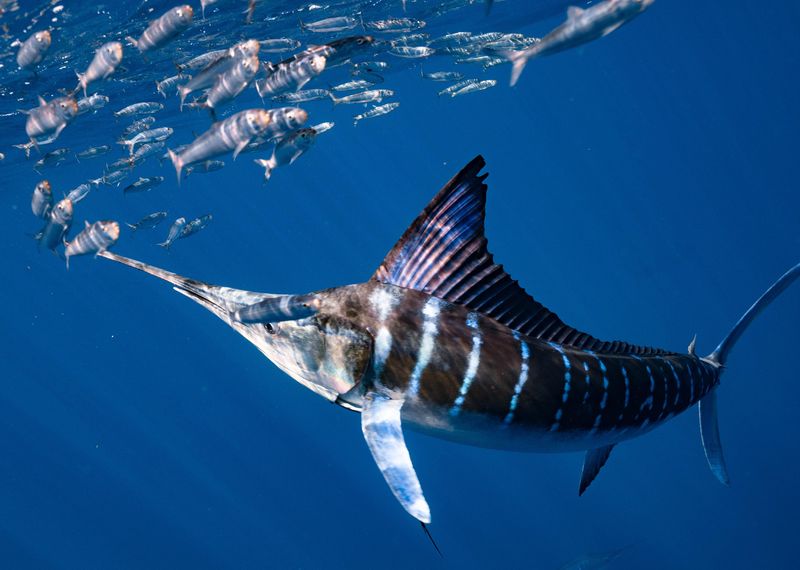
Lei Aloha battled this 1,205-pound ocean missile off Hawaii’s coast in 1980. The fish’s speed during the fight reportedly stripped hundreds of yards of line in seconds!
Black marlins are among the fastest creatures in the sea, capable of bursts exceeding 80 mph. Their rigid pectoral fins, which cannot be folded against their bodies like other billfish, create a distinctive silhouette underwater. These solitary hunters use their spears to slash through schools of tuna and mackerel.
11. Shortfin Mako Shark: The Ocean Rocket
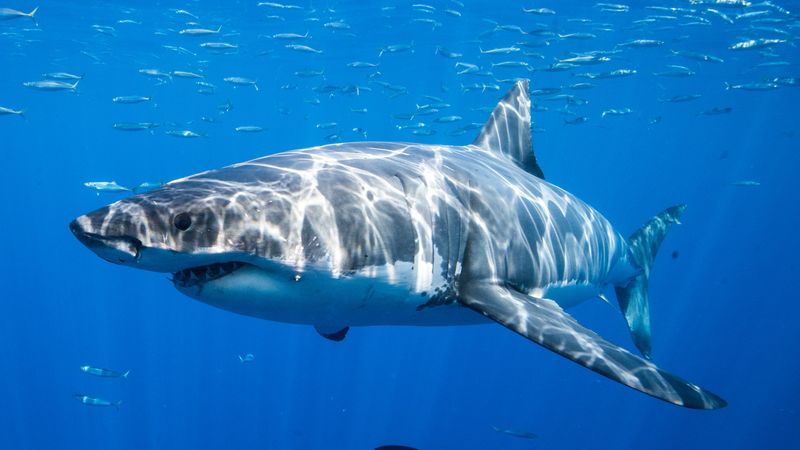
Luke Sweeney’s 1,221-pound Massachusetts catch in 2001 proved these sharks aren’t just fast—they’re massive too. Witnesses described the shark jumping completely out of water multiple times during the fight!
Makos are the cheetahs of the ocean, reaching speeds over 45 mph. Their streamlined bodies and crescent-shaped tails provide incredible acceleration. Unlike most sharks, makos maintain body temperatures warmer than surrounding water, giving them enhanced muscle performance during high-speed pursuits.
12. Atlantic Blue Marlin: The Billfish Royalty
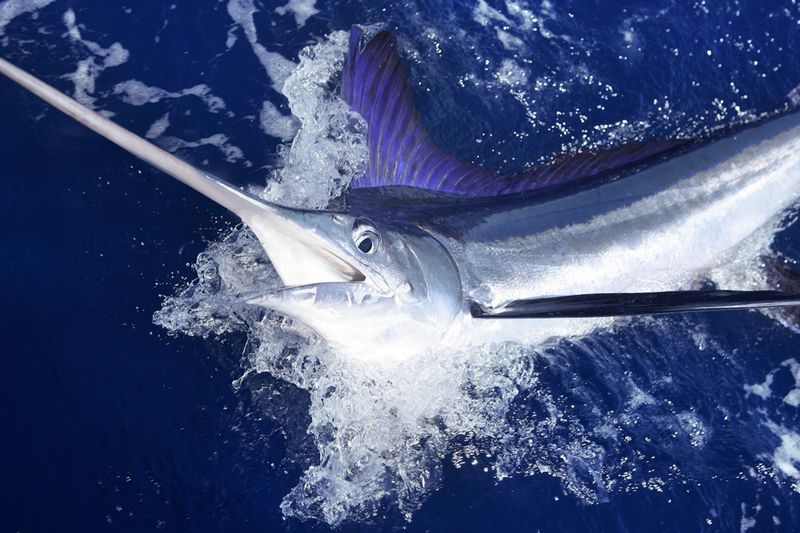
Trey Irvine’s epic battle with this 1,228-pound ocean legend off North Carolina in 2008 lasted nearly five hours. The fish’s bill was sharp enough to pierce boat hulls!
Blue marlins are among the most sought-after game fish, known for spectacular aerial displays when hooked. Their bodies change color during fights, flashing between deep blue, silver, and bronze stripes. Female blue marlins grow significantly larger than males, with most trophy catches being female.
13. Great White Shark: The Ocean’s Apex Predator
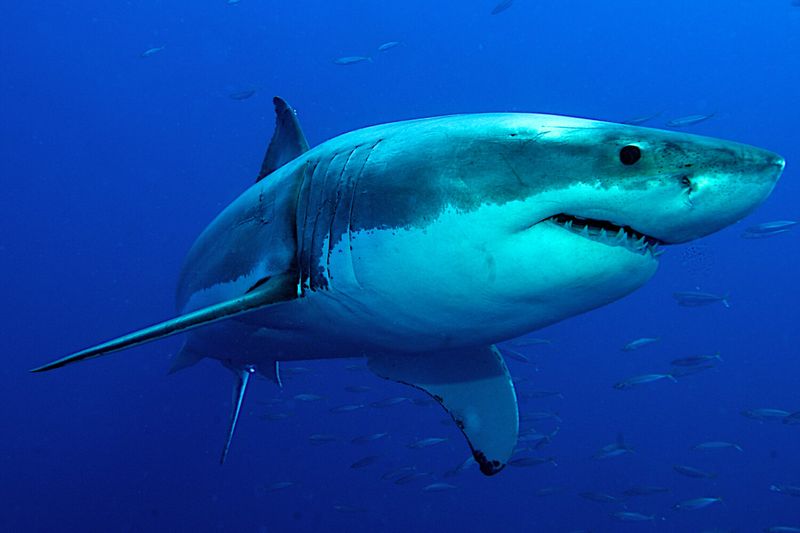
“Deep Blue,” estimated at over 2,000 pounds, became a social media sensation when filmed off Hawaii in 2019. Divers swam alongside her without cages, demonstrating these predators aren’t the mindless man-eaters often portrayed in films.
Great whites can detect a single drop of blood in 25 gallons of water. Their bodies contain specialized heat-exchanging blood vessels that keep their brains and muscles warmer than surrounding water, allowing them to hunt effectively in colder environments.
14. White Sturgeon: The River Leviathan
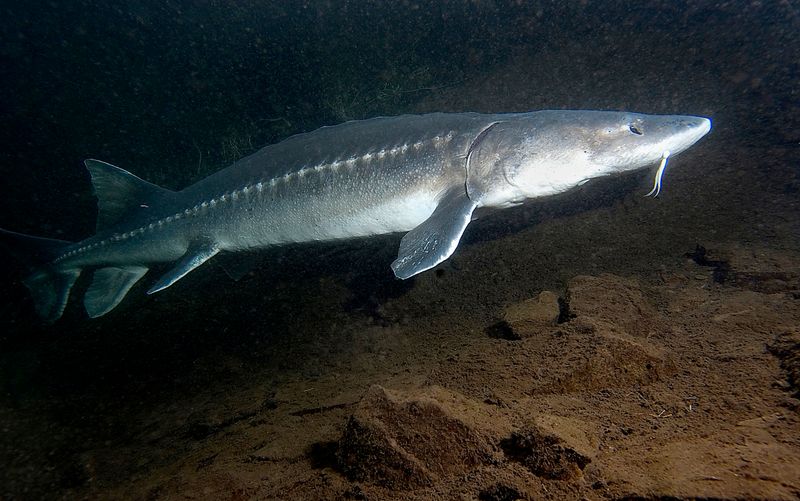
These Pacific Northwest giants can reach an estimated 1,500 pounds, making them North America’s largest freshwater fish. Some specimens are believed to be over a century old!
White sturgeon are living time capsules, with a lineage dating back 200 million years. They grow throughout their entire lives, though extremely slowly after reaching maturity. Unlike most fish, sturgeon lack scales, instead sporting five rows of bony plates called scutes along their diamond-shaped bodies.


